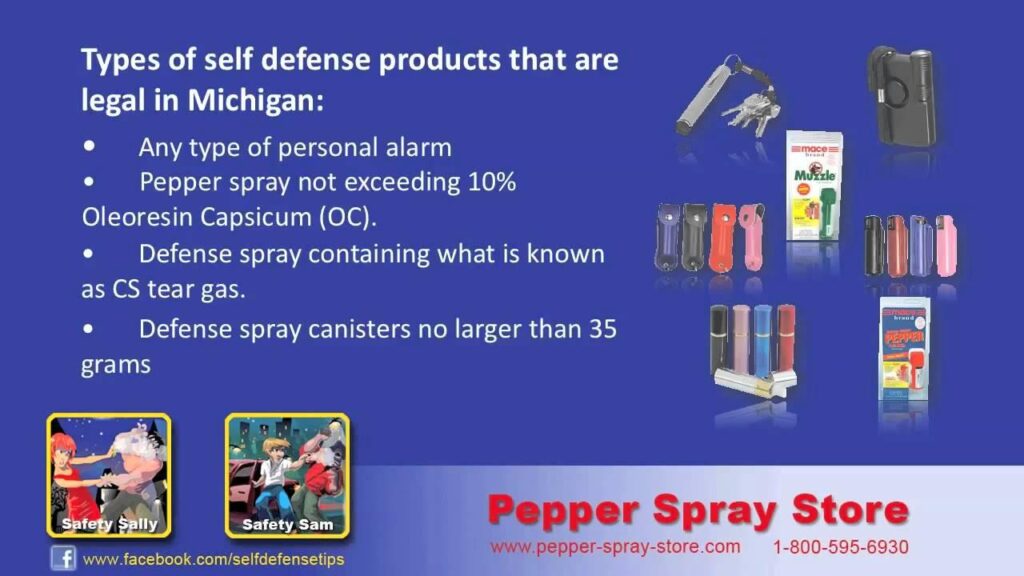Table of Contents
- Understanding Legal Restrictions on Pepper Spray Shipping Across Different Regions
- Key Shipping Carrier Policies and Compliance Requirements for Pepper Spray
- Packaging and Labeling Guidelines for Safe and Legal Transport of Pepper Spray
- Best Practices for International Pepper Spray Shipping and Avoiding Common Legal Pitfalls
- The Way Forward
Understanding Legal Restrictions on Pepper Spray Shipping Across Different Regions
When it comes to shipping pepper spray, legal limitations vary widely depending on regional regulations. In the United States, for example, federal law permits the shipment of pepper spray via ground transportation, but airlines often have stringent restrictions or outright bans on carrying it as checked or carry-on luggage. Meanwhile, Canadian law classifies pepper spray intended for use on humans as prohibited weapons, making its import and transport illegal, whereas bear spray intended for wildlife defense is allowed. Over in Europe, countries like the UK and Germany regulate pepper spray differently, often requiring specific authorization or outright prohibiting its possession by civilians.
Several factors influence these restrictions, such as the intended use, container size, and chemical concentration. Some regions enforce limits on canister volume (often under 100ml), while others require permits or impose age restrictions. Here are a few critical considerations to keep in mind:
- Classification: Is the pepper spray considered a weapon or self-defense tool?
- Transport method: Ground shipping versus air transport rules differ significantly.
- Legal permits: Some jurisdictions require licenses or registration for possession or shipment.
- Labeling and packaging: Specific labeling standards often apply, ensuring legal compliance during transit.
Key Shipping Carrier Policies and Compliance Requirements for Pepper Spray
Shipping pepper spray involves navigating a complex matrix of carrier-specific policies designed to balance safety with customer convenience. Major carriers like UPS, FedEx, and USPS each impose distinct restrictions regarding packaging, labeling, and quantity limits. For instance, some require the product to be shipped in its original, sealed packaging with clear hazard warnings, while others may demand compliance with federal hazardous materials regulations. Additionally, restrictions often ramp up for international shipments, with certain countries outright prohibiting pepper spray imports, necessitating thorough pre-shipment verification to avoid costly delays or confiscations.
Key compliance essentials include:
- Adherence to packaging standards that prevent accidental discharge during transit.
- Correct and visible labeling as a hazardous material, including appropriate hazard class identification.
- Quantity limits per package or shipment, often capped to minimize risk.
- Compliance with state and federal laws, particularly concerning interstate transport.
Packaging and Labeling Guidelines for Safe and Legal Transport of Pepper Spray
When shipping pepper spray, adhering to strict packaging and labeling protocols is essential to ensure compliance with both local and international regulations. The container must be securely sealed and placed inside a durable outer box to prevent accidental discharge or damage during transit. Using cushioning materials like bubble wrap or foam peanuts helps absorb shocks and protects the canister. Additionally, many jurisdictions require the product to be packed separately from other hazardous items, emphasizing the need for containers that can withstand pressure and impact without leakage. Clear and legible labels displaying the contents, hazard warnings, and handling instructions must be affixed to both the inner and outer packages.
Labeling is not just a formality but a critical element for legal transport and safety. Important details typically include:
- Product name and active ingredients
- Manufacturer’s contact information
- Hazard symbols and precautionary statements
- Instructions for safe handling and emergency measures
Shipments must also comply with specific hazardous material regulations that vary by location, such as IATA for air transport or DOT for road shipments. Non-compliance not only risks fines and shipment delays but could also endanger handlers and recipients. Staying informed about the latest packaging and labeling standards is paramount for anyone involved in pepper spray distribution or transportation.
Best Practices for International Pepper Spray Shipping and Avoiding Common Legal Pitfalls
When shipping pepper spray internationally, it’s crucial to thoroughly research each destination country’s regulations to ensure compliance. Many nations classify pepper spray as a controlled or prohibited item, which means shipping them without proper authorization can lead to confiscation or legal penalties. To avoid these issues, always verify if a special permit or license is required, and confirm the quantity, concentration limits, and packaging standards imposed. For example, some countries only permit pepper spray that contains certain formulations or have restrictions on the size of the canister. Shipping carriers also differ in their policies regarding hazardous materials, so consulting their guidelines beforehand is a must.
Best practices for safe and legal shipping include:
- Labeling packages accurately with details about the contents and safety precautions.
- Using child-resistant, tamper-proof packaging compliant with international transportation rules.
- Choosing reliable couriers experienced in shipping restricted items.
- Declaring the contents transparently to avoid delays or fines during customs inspections.
- Tracking shipment progress actively and maintaining records for legal proof.
By adhering to these guidelines, shippers can minimize risks significantly and ensure their pepper spray arrives safely and legally. Always stay updated with global customs notices, as regulatory landscapes evolve, and exceptions may apply depending on diplomatic relations or emergency policies.
The Way Forward
Navigating the shipping rules for pepper spray can be tricky, especially since regulations vary widely depending on your location. Whether you’re a business owner looking to ship products or an individual ordering for personal protection, understanding these nuances is essential to avoid legal complications and delivery delays. Always check the specific laws and carrier guidelines in your area before sending or receiving pepper spray. Staying informed ensures not only compliance but also the safe and responsible handling of this self-defense tool. Remember, when it comes to pepper spray shipping, knowledge truly is power.Check Our Other Blogs
- StunGun – Your Trusted Source for Stun Guns, Laws, and Self-Defense Tips
- PepperSprayLaws – Your Trusted Resource for Pepper Spray Information
- StunGunLaws – Your Trusted Guide to Stun Gun Legality and Safety




